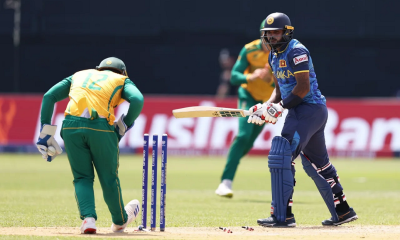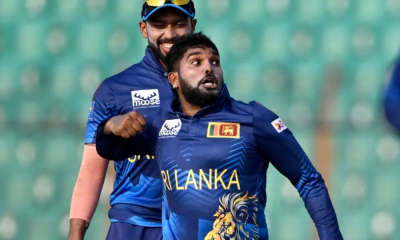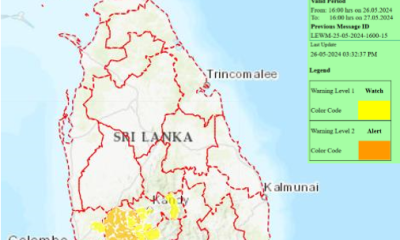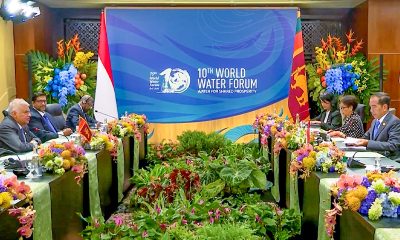Features
Human Rights and War Crimes : Sri Lanka’s ignorance matches that of US

By Daya Gamage
Foreign Service National Political Specialist (ret), US Department of State
The Capitol Building, which houses both legislative branches of the United States – and the Sri Lanka Embassy are not very far apart in Washington, DC. The Capitol Building has an office for Congresswoman, Deborah Ross, who along with another four Members submitted a resolution against Sri Lanka on 18 May (2023) to the House Foreign Affairs Committee, on the day when the 14th anniversary of the conclusion of Eelam War IV fell.
It seems that Congresswoman Ross and the Sri Lanka diplomatic corps have a serious communication gap, which allowed Ross and her staff to engage in a dialogue with a pro-Eelam organisation, the Tamil American United Political Action Committee in Raleigh, North Carolina, which she represents in the Congress, to draft a resolution and submit it to the House Foreign Affairs Committee, castigating Sri Lanka on issues of human rights and alleged war crimes; the Sri Lankan diplomats in the other building failed to remember that it was Ross who had previously submitted a resolution, against Sri Lanka on 18 May 2021, and neglected their diplomatic responsibilities.
They did not meet her to refute the ill-informed pronouncements in the 2021 resolution. Both Resolutions – 2021 and 2023 – are similar. The writings and pronouncements in the Tamil American United PAC Committee website found themselves into the Ross’ resolution of 2023, due to manoeuvrings by Murugiah Muraleetharan, the President of the association.
Then, the Sri Lankan media reported that Foreign Minister Ali Sabry had summoned the Canadian High Commissioner to ‘protest’ Prime Minister Justin Trudeau’s statement that Sri Lanka had committed genocide its war with the LTTE. There were no media reports that Minister Sabry had informed the Canadian diplomat that it was the LTTE that engaged in genocidal acts, forcibly removing Muslims and Sinhalese from the LTTE-controlled Northern Province.
Minister Sabry brought it to the attention of the Canadian diplomat that since the anti-Tamil riots, in 1983, there had been no harassment of Tamils, despite the Tamil Tigers infiltrating the Sinhalese areas, in the south, and massacring Sinhalese villagers and Buddhist monks. There were no indications if Sabry told him that when the war was over, in May 2009, there were 40% (out of the national 12%) Tamils living among the Sinhalese, in the South, far away from the North and the East, and that at present about 50% Tamils are now living outside those provinces.
The State Department’s misconceptions about the final phases of the Vanni war were due to inadequate and incompetent reporting thereon by the American Embassy in Colombo. Questions about Embassy Colombo’s reporting were raised by the State Department Office of the Inspector General (OIG) during a routine assessment of Embassy operations during the period from August 2009 through September 2010. The period under review coincided with the release to Congress by the State Department’s Office of Global Criminal Justice on “Crimes Against Humanity in Sri Lanka”, which drew heavily on Embassy reporting.
OIG reports always identify weaknesses in the Embassy’s performance, but this report on Colombo was particularly critical of the political reporting section, whose personnel are inexperienced and lack proper training. The inspectors found that the American reporting officers in Colombo had not travelled adequately around the country and their reports were insufficiently analytical. No surprise the US Embassy and its Ambassador,accepted uncritically the views of the UN and other sources.
US government officials who denounce Sri Lanka for human rights violations appear to have no proper understanding of the evidentiary weaknesses of their accusations. Worse still, they apparently are ignorant or unmindful of reports by others in the USG and the organisations that attest to these empirical shortcomings. Three important reports relevant to Sri Lanka were published by reputable investigative bodies between December 2008 and September 2009—a period that bracketed the worst alleged crimes by Sri Lanka.
The first of these was produced by the Genocide Prevention Task Force co-chaired by former Secretary of State Madeleine Albright and former Secretary of Defence, William Cohen and convened jointly by the US Holocaust Memorial Museum, the American Academy of Diplomacy, and the United States Institute of Peace. This report noted in general terms, “When our diplomats and intelligence reporting from the post is inadequate, analysts in Washington are left to make judgments from ambiguous and frequently conflicting information and assessments.”
The latter two reports published shortly after the end of hostilities in Sri Lanka were drafted by the US Congress’ independent investigative arm, the Government Accountability Office (GAO). The two reports disclosed very serious weaknesses in policy decisions taken at the highest levels in the State Department as a result of ambiguous and frequently conflicting information and assessments provided by overseas diplomatic missions that are ill-equipped to handle required reporting.
It should be stated here that US lawmakers in both the Senate and the House, apart from getting distorted views from the pro-Tamil Eelam lobby, draw heavily from State Department reports and analyses. Worse, the Washington-based Sri Lankan diplomats as well as Sri Lankan agencies that deal with foreign-international affairs were either blind to reality or conveniently ignored what needed to be presented to the international community (IC).
The disgraceful double-standards of Washington policymakers and lawmakers – and, of course, their overseas diplomats – in dealing with Sri Lanka’s ‘national issues’, since the advent of the separatist war in the north, and the insurrection in the south, in the 1980s, are now very broadly dealt with by two persons who worked within the US Department of State for 30 years in the area of foreign affairs. One is this writer, who is a retired Foreign Service National Political Specialist, once accredited to the Political Section of the U.S. Embassy in Colombo, and the other Dr. Robert K. Boggs, a retired Senior Foreign Service (FS) and Intelligence Officer, who served as Political Counsellor, at the Colombo Mission, with a very broad knowledge of India’s ‘role’ in Sri Lanka. Their manuscript, ‘Defending Democracy: Lessons in Strategic Diplomacy from US-Sri Lankan Relations” is nearing completion with disclosures, analyses and interpretations based on their up-close and personal knowledge and understanding how Washington used ‘double standards’ in handling its foreign relations to reduce Sri Lanka to a client state.
The USG has for years pressed for an international mechanism to judge Sri Lankan military officers for decisions they made in leading their nation’s fight against militants the USG had designated as terrorists. The USG has done this despite its stated policy of recognising “a state’s inherent right to defend itself from armed attacks, including those by non-state actors such as terrorist groups, and expects both states and non-state actors to comply with their international legal obligations.”
For decades Sri Lankan policymakers have demonstrated a poor understanding of how the American foreign policy establishment works and how they might use public diplomacy and strategic communication to counter the influence of the Tamil Diaspora. The persistent ineffectiveness of Sri Lankan diplomacy in Washington has been a major reason why in the final months of the war (March/April 2009) the USG threatened to block a $1.9 billion IMF loan in the hope of dissuading the GSL from continuing its final military campaign. The US threat proved unsuccessful (mainly for intra- governmental reasons), but the additional stress it placed on bilateral relations could have been avoided if the GSL had developed better rapport with Washington through more professional diplomacy.
A serious lack of professional diplomacy, the naive manner in which it dealt with international/foreign affairs, having absolutely no research-investigative ability, Sri Lanka couldn’t understand the following scenario to develop its own diplomatic prowess to deal with Washington:
At the time the United States was pressuring Colombo to accept “national, international, and hybrid mechanisms to clarify the fate and whereabouts of the disappeared,” the USG had not itself ratified the UN convention of 2006 requiring state party to criminalize enforced disappearances and take steps to hold those responsible to account. Despite a resolution passed by the U.S. House of Representatives on November 19, 2020 calling on the USG to ratify the international convention, this still has not happened.
America’s long history of rejecting accountability is strongly rooted in legislation. The American Service-Members Protection Act (ASPA) was an amendment to the 2002 Supplemental Appropriations Act (H.R. 4775) passed in response to the 9/11 terrorist attacks and the launch of the so-called Global War on Terror. The ASPA aims to protect U.S. military personnel and other elected and appointed officials of the government against prosecution by an international criminal court, to which the US is not a party.
Among other defensive provisions the Act prohibits federal, state and local governments and agencies (including courts and law enforcement agencies) from assisting the International Criminal Court in The Hague. It even prohibits US military aid to countries that are parties to the Court. In 2002, during the administration of Prime Minister Wickremesinghe, the GoSL signed with the US an “Article 98 Agreement,” agreeing not to hand over US nationals to the Court.
US policy was based on an inadequate understanding of the underlying causes of the civil war in Sri Lanka—an understanding that does not include inter-caste tensions within the Tamil community, the political obduracy of upper caste elites, unwilling to adapt to the post-Independence democratic order, the origins and dynamics of two competing nationalisms, demographic and economic pressures in an island state, and the imperative in a young democratic system of policies to expand economic opportunity to the disadvantaged majority within both the Sinhalese and Tamil communities.
There has been a perverse lack of appreciation internationally of the threat that an autocratic, criminal, terrorist organisation posed to the security of the great majority of Sri Lankans including Tamils. Tragically, Washington’s simplistic perception of an ethnic majority oppressing a ‘righteously rebellious’ minority prolonged the bloodshed, alienated a historically reliable partner, weakened a beleaguered democracy, and strengthened the influence of US antagonists in the region.
Washington ignored or glossed over the complex skein of factors that dominated ethnic politics for decades. (To be continued)
Features
The heart-friendly health minister
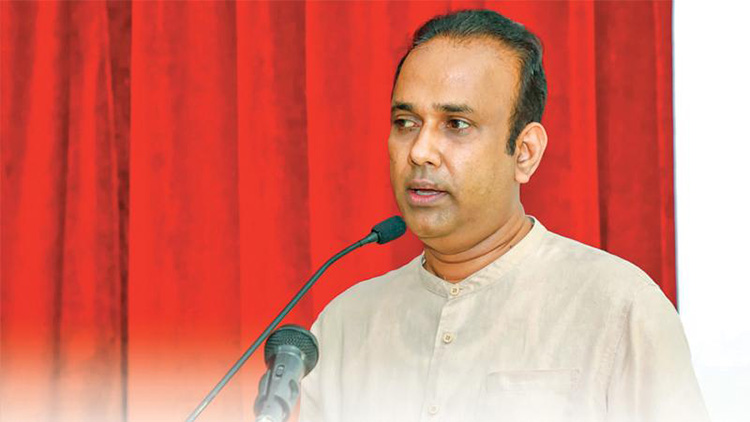
by Dr Gotabhya Ranasinghe
Senior Consultant Cardiologist
National Hospital Sri Lanka
When we sought a meeting with Hon Dr. Ramesh Pathirana, Minister of Health, he graciously cleared his busy schedule to accommodate us. Renowned for his attentive listening and deep understanding, Minister Pathirana is dedicated to advancing the health sector. His openness and transparency exemplify the qualities of an exemplary politician and minister.
Dr. Palitha Mahipala, the current Health Secretary, demonstrates both commendable enthusiasm and unwavering support. This combination of attributes makes him a highly compatible colleague for the esteemed Minister of Health.
Our discussion centered on a project that has been in the works for the past 30 years, one that no other minister had managed to advance.
Minister Pathirana, however, recognized the project’s significance and its potential to revolutionize care for heart patients.
The project involves the construction of a state-of-the-art facility at the premises of the National Hospital Colombo. The project’s location within the premises of the National Hospital underscores its importance and relevance to the healthcare infrastructure of the nation.
This facility will include a cardiology building and a tertiary care center, equipped with the latest technology to handle and treat all types of heart-related conditions and surgeries.
Securing funding was a major milestone for this initiative. Minister Pathirana successfully obtained approval for a $40 billion loan from the Asian Development Bank. With the funding in place, the foundation stone is scheduled to be laid in September this year, and construction will begin in January 2025.
This project guarantees a consistent and uninterrupted supply of stents and related medications for heart patients. As a result, patients will have timely access to essential medical supplies during their treatment and recovery. By securing these critical resources, the project aims to enhance patient outcomes, minimize treatment delays, and maintain the highest standards of cardiac care.
Upon its fruition, this monumental building will serve as a beacon of hope and healing, symbolizing the unwavering dedication to improving patient outcomes and fostering a healthier society.We anticipate a future marked by significant progress and positive outcomes in Sri Lanka’s cardiovascular treatment landscape within the foreseeable timeframe.
Features
A LOVING TRIBUTE TO JESUIT FR. ALOYSIUS PIERIS ON HIS 90th BIRTHDAY

by Fr. Emmanuel Fernando, OMI
Jesuit Fr. Aloysius Pieris (affectionately called Fr. Aloy) celebrated his 90th birthday on April 9, 2024 and I, as the editor of our Oblate Journal, THE MISSIONARY OBLATE had gone to press by that time. Immediately I decided to publish an article, appreciating the untiring selfless services he continues to offer for inter-Faith dialogue, the renewal of the Catholic Church, his concern for the poor and the suffering Sri Lankan masses and to me, the present writer.
It was in 1988, when I was appointed Director of the Oblate Scholastics at Ampitiya by the then Oblate Provincial Fr. Anselm Silva, that I came to know Fr. Aloy more closely. Knowing well his expertise in matters spiritual, theological, Indological and pastoral, and with the collaborative spirit of my companion-formators, our Oblate Scholastics were sent to Tulana, the Research and Encounter Centre, Kelaniya, of which he is the Founder-Director, for ‘exposure-programmes’ on matters spiritual, biblical, theological and pastoral. Some of these dimensions according to my view and that of my companion-formators, were not available at the National Seminary, Ampitiya.
Ever since that time, our Oblate formators/ accompaniers at the Oblate Scholasticate, Ampitiya , have continued to send our Oblate Scholastics to Tulana Centre for deepening their insights and convictions regarding matters needed to serve the people in today’s context. Fr. Aloy also had tried very enthusiastically with the Oblate team headed by Frs. Oswald Firth and Clement Waidyasekara to begin a Theologate, directed by the Religious Congregations in Sri Lanka, for the contextual formation/ accompaniment of their members. It should very well be a desired goal of the Leaders / Provincials of the Religious Congregations.
Besides being a formator/accompanier at the Oblate Scholasticate, I was entrusted also with the task of editing and publishing our Oblate journal, ‘The Missionary Oblate’. To maintain the quality of the journal I continue to depend on Fr. Aloy for his thought-provoking and stimulating articles on Biblical Spirituality, Biblical Theology and Ecclesiology. I am very grateful to him for his generous assistance. Of late, his writings on renewal of the Church, initiated by Pope St. John XX111 and continued by Pope Francis through the Synodal path, published in our Oblate journal, enable our readers to focus their attention also on the needed renewal in the Catholic Church in Sri Lanka. Fr. Aloy appreciated very much the Synodal path adopted by the Jesuit Pope Francis for the renewal of the Church, rooted very much on prayerful discernment. In my Religious and presbyteral life, Fr.Aloy continues to be my spiritual animator / guide and ongoing formator / acccompanier.
Fr. Aloysius Pieris, BA Hons (Lond), LPh (SHC, India), STL (PFT, Naples), PhD (SLU/VC), ThD (Tilburg), D.Ltt (KU), has been one of the eminent Asian theologians well recognized internationally and one who has lectured and held visiting chairs in many universities both in the West and in the East. Many members of Religious Congregations from Asian countries have benefited from his lectures and guidance in the East Asian Pastoral Institute (EAPI) in Manila, Philippines. He had been a Theologian consulted by the Federation of Asian Bishops’ Conferences for many years. During his professorship at the Gregorian University in Rome, he was called to be a member of a special group of advisers on other religions consulted by Pope Paul VI.
Fr. Aloy is the author of more than 30 books and well over 500 Research Papers. Some of his books and articles have been translated and published in several countries. Among those books, one can find the following: 1) The Genesis of an Asian Theology of Liberation (An Autobiographical Excursus on the Art of Theologising in Asia, 2) An Asian Theology of Liberation, 3) Providential Timeliness of Vatican 11 (a long-overdue halt to a scandalous millennium, 4) Give Vatican 11 a chance, 5) Leadership in the Church, 6) Relishing our faith in working for justice (Themes for study and discussion), 7) A Message meant mainly, not exclusively for Jesuits (Background information necessary for helping Francis renew the Church), 8) Lent in Lanka (Reflections and Resolutions, 9) Love meets wisdom (A Christian Experience of Buddhism, 10) Fire and Water 11) God’s Reign for God’s poor, 12) Our Unhiddden Agenda (How we Jesuits work, pray and form our men). He is also the Editor of two journals, Vagdevi, Journal of Religious Reflection and Dialogue, New Series.
Fr. Aloy has a BA in Pali and Sanskrit from the University of London and a Ph.D in Buddhist Philosophy from the University of Sri Lankan, Vidyodaya Campus. On Nov. 23, 2019, he was awarded the prestigious honorary Doctorate of Literature (D.Litt) by the Chancellor of the University of Kelaniya, the Most Venerable Welamitiyawe Dharmakirthi Sri Kusala Dhamma Thera.
Fr. Aloy continues to be a promoter of Gospel values and virtues. Justice as a constitutive dimension of love and social concern for the downtrodden masses are very much noted in his life and work. He had very much appreciated the commitment of the late Fr. Joseph (Joe) Fernando, the National Director of the Social and Economic Centre (SEDEC) for the poor.
In Sri Lanka, a few religious Congregations – the Good Shepherd Sisters, the Christian Brothers, the Marist Brothers and the Oblates – have invited him to animate their members especially during their Provincial Congresses, Chapters and International Conferences. The mainline Christian Churches also have sought his advice and followed his seminars. I, for one, regret very much, that the Sri Lankan authorities of the Catholic Church –today’s Hierarchy—- have not sought Fr.
Aloy’s expertise for the renewal of the Catholic Church in Sri Lanka and thus have not benefited from the immense store of wisdom and insight that he can offer to our local Church while the Sri Lankan bishops who governed the Catholic church in the immediate aftermath of the Second Vatican Council (Edmund Fernando OMI, Anthony de Saram, Leo Nanayakkara OSB, Frank Marcus Fernando, Paul Perera,) visited him and consulted him on many matters. Among the Tamil Bishops, Bishop Rayappu Joseph was keeping close contact with him and Bishop J. Deogupillai hosted him and his team visiting him after the horrible Black July massacre of Tamils.
Features
A fairy tale, success or debacle

Sri Lanka-Singapore Free Trade Agreement
By Gomi Senadhira
senadhiragomi@gmail.com
“You might tell fairy tales, but the progress of a country cannot be achieved through such narratives. A country cannot be developed by making false promises. The country moved backward because of the electoral promises made by political parties throughout time. We have witnessed that the ultimate result of this is the country becoming bankrupt. Unfortunately, many segments of the population have not come to realize this yet.” – President Ranil Wickremesinghe, 2024 Budget speech
Any Sri Lankan would agree with the above words of President Wickremesinghe on the false promises our politicians and officials make and the fairy tales they narrate which bankrupted this country. So, to understand this, let’s look at one such fairy tale with lots of false promises; Ranil Wickremesinghe’s greatest achievement in the area of international trade and investment promotion during the Yahapalana period, Sri Lanka-Singapore Free Trade Agreement (SLSFTA).
It is appropriate and timely to do it now as Finance Minister Wickremesinghe has just presented to parliament a bill on the National Policy on Economic Transformation which includes the establishment of an Office for International Trade and the Sri Lanka Institute of Economics and International Trade.
Was SLSFTA a “Cleverly negotiated Free Trade Agreement” as stated by the (former) Minister of Development Strategies and International Trade Malik Samarawickrama during the Parliamentary Debate on the SLSFTA in July 2018, or a colossal blunder covered up with lies, false promises, and fairy tales? After SLSFTA was signed there were a number of fairy tales published on this agreement by the Ministry of Development Strategies and International, Institute of Policy Studies, and others.
However, for this article, I would like to limit my comments to the speech by Minister Samarawickrama during the Parliamentary Debate, and the two most important areas in the agreement which were covered up with lies, fairy tales, and false promises, namely: revenue loss for Sri Lanka and Investment from Singapore. On the other important area, “Waste products dumping” I do not want to comment here as I have written extensively on the issue.
1. The revenue loss
During the Parliamentary Debate in July 2018, Minister Samarawickrama stated “…. let me reiterate that this FTA with Singapore has been very cleverly negotiated by us…. The liberalisation programme under this FTA has been carefully designed to have the least impact on domestic industry and revenue collection. We have included all revenue sensitive items in the negative list of items which will not be subject to removal of tariff. Therefore, 97.8% revenue from Customs duty is protected. Our tariff liberalisation will take place over a period of 12-15 years! In fact, the revenue earned through tariffs on goods imported from Singapore last year was Rs. 35 billion.
The revenue loss for over the next 15 years due to the FTA is only Rs. 733 million– which when annualised, on average, is just Rs. 51 million. That is just 0.14% per year! So anyone who claims the Singapore FTA causes revenue loss to the Government cannot do basic arithmetic! Mr. Speaker, in conclusion, I call on my fellow members of this House – don’t mislead the public with baseless criticism that is not grounded in facts. Don’t look at petty politics and use these issues for your own political survival.”
I was surprised to read the minister’s speech because an article published in January 2018 in “The Straits Times“, based on information released by the Singaporean Negotiators stated, “…. With the FTA, tariff savings for Singapore exports are estimated to hit $10 million annually“.
As the annual tariff savings (that is the revenue loss for Sri Lanka) calculated by the Singaporean Negotiators, Singaporean $ 10 million (Sri Lankan rupees 1,200 million in 2018) was way above the rupees’ 733 million revenue loss for 15 years estimated by the Sri Lankan negotiators, it was clear to any observer that one of the parties to the agreement had not done the basic arithmetic!
Six years later, according to a report published by “The Morning” newspaper, speaking at the Committee on Public Finance (COPF) on 7th May 2024, Mr Samarawickrama’s chief trade negotiator K.J. Weerasinghehad had admitted “…. that forecasted revenue loss for the Government of Sri Lanka through the Singapore FTA is Rs. 450 million in 2023 and Rs. 1.3 billion in 2024.”
If these numbers are correct, as tariff liberalisation under the SLSFTA has just started, we will pass Rs 2 billion very soon. Then, the question is how Sri Lanka’s trade negotiators made such a colossal blunder. Didn’t they do their basic arithmetic? If they didn’t know how to do basic arithmetic they should have at least done their basic readings. For example, the headline of the article published in The Straits Times in January 2018 was “Singapore, Sri Lanka sign FTA, annual savings of $10m expected”.
Anyway, as Sri Lanka’s chief negotiator reiterated at the COPF meeting that “…. since 99% of the tariffs in Singapore have zero rates of duty, Sri Lanka has agreed on 80% tariff liberalisation over a period of 15 years while expecting Singapore investments to address the imbalance in trade,” let’s turn towards investment.
Investment from Singapore
In July 2018, speaking during the Parliamentary Debate on the FTA this is what Minister Malik Samarawickrama stated on investment from Singapore, “Already, thanks to this FTA, in just the past two-and-a-half months since the agreement came into effect we have received a proposal from Singapore for investment amounting to $ 14.8 billion in an oil refinery for export of petroleum products. In addition, we have proposals for a steel manufacturing plant for exports ($ 1 billion investment), flour milling plant ($ 50 million), sugar refinery ($ 200 million). This adds up to more than $ 16.05 billion in the pipeline on these projects alone.
And all of these projects will create thousands of more jobs for our people. In principle approval has already been granted by the BOI and the investors are awaiting the release of land the environmental approvals to commence the project.
I request the Opposition and those with vested interests to change their narrow-minded thinking and join us to develop our country. We must always look at what is best for the whole community, not just the few who may oppose. We owe it to our people to courageously take decisions that will change their lives for the better.”
According to the media report I quoted earlier, speaking at the Committee on Public Finance (COPF) Chief Negotiator Weerasinghe has admitted that Sri Lanka was not happy with overall Singapore investments that have come in the past few years in return for the trade liberalisation under the Singapore-Sri Lanka Free Trade Agreement. He has added that between 2021 and 2023 the total investment from Singapore had been around $162 million!
What happened to those projects worth $16 billion negotiated, thanks to the SLSFTA, in just the two-and-a-half months after the agreement came into effect and approved by the BOI? I do not know about the steel manufacturing plant for exports ($ 1 billion investment), flour milling plant ($ 50 million) and sugar refinery ($ 200 million).
However, story of the multibillion-dollar investment in the Petroleum Refinery unfolded in a manner that would qualify it as the best fairy tale with false promises presented by our politicians and the officials, prior to 2019 elections.
Though many Sri Lankans got to know, through the media which repeatedly highlighted a plethora of issues surrounding the project and the questionable credentials of the Singaporean investor, the construction work on the Mirrijiwela Oil Refinery along with the cement factory began on the24th of March 2019 with a bang and Minister Ranil Wickremesinghe and his ministers along with the foreign and local dignitaries laid the foundation stones.
That was few months before the 2019 Presidential elections. Inaugurating the construction work Prime Minister Ranil Wickremesinghe said the projects will create thousands of job opportunities in the area and surrounding districts.
The oil refinery, which was to be built over 200 acres of land, with the capacity to refine 200,000 barrels of crude oil per day, was to generate US$7 billion of exports and create 1,500 direct and 3,000 indirect jobs. The construction of the refinery was to be completed in 44 months. Four years later, in August 2023 the Cabinet of Ministers approved the proposal presented by President Ranil Wickremesinghe to cancel the agreement with the investors of the refinery as the project has not been implemented! Can they explain to the country how much money was wasted to produce that fairy tale?
It is obvious that the President, ministers, and officials had made huge blunders and had deliberately misled the public and the parliament on the revenue loss and potential investment from SLSFTA with fairy tales and false promises.
As the president himself said, a country cannot be developed by making false promises or with fairy tales and these false promises and fairy tales had bankrupted the country. “Unfortunately, many segments of the population have not come to realize this yet”.
(The writer, a specialist and an activist on trade and development issues . )




